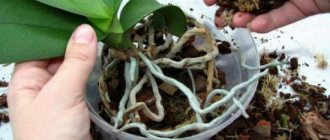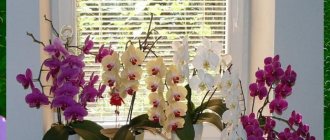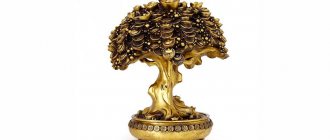Ways to color orchids blue
There are two main ways to make orchid flowers blue. The first gives a superficial color to the petals. For this purpose, special floral aerosols are used.
The second method delivers pigment to the flower from the inside, through the plant’s conducting system. This delivery can be accomplished in two ways:
| Flower coloring method | Methodology | Evaluating effectiveness |
| Surface | · a “collar” of paper is attached to the flower under the peduncle; |
· a stream of aerosol floral paint is directed onto the petals.
· dyeing does not take much time;
· dyeing occurs without mechanical damage to tissues;
· the coloring is intense and long-lasting;
· the dye remains on the surface of the petals and does not penetrate into the tissues of other organs.
Flaws:
· Care and precision are required when spraying paint;
· flowers are painted evenly blue and look artificial;
· the lifespan of flowers decreases;
· newly blooming buds require repeating the staining procedure.
The solution is poured into a deep container;
· the pot with the orchid is placed in the solution for 15 minutes.
· the dye is delivered to the flower without mechanical damage to the tissue;
· not only processed flowers are painted, but also closed buds.
Flaws:
· orchid roots, leaves, bulbs and peduncles are painted along with the flowers;
· flowering duration decreases;
· when mixed with natural pigments in certain parts of the flower, the dye can produce brown spots;
· uniformity, intensity and color fastness depend on the chosen dye;
· the viability of the orchid decreases.
· the lower lateral bud on the peduncle is freed from the integumentary scale;
· An injection of dye is made into the kidney at an oblique angle.
· pigment is quickly delivered to the petals;
· not only processed flowers are painted, but also closed buds.
Flaws:
· infection may occur at the injection site;
· the viability of the orchid decreases sharply.
Professional florists prefer to color orchids by injection into the peduncle. Despite the risk of infection, this staining method is considered the most effective.
Important! Under no circumstances should paint be injected into the root neck of an orchid. After this procedure, in more than 90% of cases the plant dies.
Care after purchase
Blue orchids require special treatment and care. At first, you need to carefully observe the plant. If it maintains a healthy appearance, losing the artificial color of the buds over time, there is no need to worry. But how to care for a withered flower, the whole appearance of which indicates that it was mercilessly destroyed by ink?
If he dies before our eyes, despite the obvious risk, he should be transplanted immediately - at least he will have a chance of survival. You need to remove it from the container and carefully wash the roots in warm water. After this, cut off all the affected areas - both the root system and the above-ground parts, sprinkle the affected areas with ash and plant in a new pot with fresh fertile soil.
So, plants of “royal” color do not exist in the natural environment, but true connoisseurs of these flowers should not be disheartened by this fact. Moreover, knowing the consequences of coloring, you can learn to save such “patients,” and they, in turn, will thank you with their delicate natural blooms.
You can also watch a video about the blue orchid:
Choosing a dye for coloring an orchid
To color orchids, flower growers try to use different chemical dyes - from stationery ink to food coloring. Practice shows that plants react differently to these substances. The quality of coloring itself also differs:
- Stationery dyes (ink, ink, gouache paints, etc.). The most problematic material from a plant safety point of view. Stationery paints contain phytotoxic components - alcohols, viscosity and wettability modifiers, acids, etc. Painting with such substances is guaranteed to lead to the death of the orchid.
- Food colorings. Most often, flower growers use paint for Easter eggs. Blue colors are produced by dyes labeled E130 to E139. Most of them are products of coal processing or oil refining, and therefore are also unsafe for plant tissue.
- Floral aerosols. They have practically no phytotoxicity, since they are applied only to the surface of the petals. To paint orchids in blue shades, you can use “Spring pro florist” paint: for light blue – “Soft blue”, for blue – “Royal blue”.
- Floral liquid paints for fresh flowers. It is this product that is used by some unscrupulous orchid manufacturers to give plants rare colors. The speed and quality of dyeing are high, due to good solubility in water and rapid distribution of pigment throughout tissues. Complete coloring of the orchid flower occurs within a few hours after the injection.
Among liquid floral paints, the following have proven themselves well:
| Advantages: | ||
| Delivery of pigment through irrigation | · the dye dissolves in irrigation water; | |
| Advantages: | ||
| Pigment delivery by injection | · a special dye is drawn into the syringe; | |
| Advantages: | ||
| Name | Description | average cost |
| "Vase Color" | Dyes available in 300 ml glass bottles. They can be added to irrigation water or used in pure form for injection. For coloring in shades of blue, “Light Blue” and “Dark Blue” dyes are suitable. | 380 rubles per bottle |
| "Erelia" | Dyes available in containers of different volumes - from 250 ml to 5 liters. Can be used with irrigation water or by injection. To obtain blue shades of varying degrees of intensity, paints numbered 4, 7, 8 and 21 are suitable. | 150 rubles for 250 ml |
Tip #1. To ensure that the color of a painted orchid is as pure as possible, it is better to test dyes on white varieties.
Caring for an artificially colored orchid
An orchid that has been dyed requires ideal conditions. You need to understand that the plant is experiencing severe stress, and it needs help to survive it with minimal losses. To help the orchid, you should pay attention to the following microclimate parameters:
- Air temperature is moderate, +18-25 0 C. Drafts are completely eliminated. Ventilation - only with forced ventilation.
- Air humidity is constant, at 60-70%. Too dry air will further shorten the flowering period, and too humid air will increase the risk of infection of the injection site with fungi.
- Substrate humidity is moderate. Watering should be adjusted so that the substrate has time to dry thoroughly. Any problems with the root system will lead to the rapid death of the plant.
How to make a blue orchid at home?
Blue or light blue Phalaenopsis can be found very often in stores today. Lovers immediately wonder: does such a variety really exist or is it a painted blue orchid?
In fact, these are ordinary Phalaenopsis painted over with special chemical dyes. Many sellers do not consider it necessary to warn the buyer about this.
With each new flowering, the buds become dull and have an unnatural color.
Methods
Today there are special approved technologies on how to turn a white orchid into a blue one. Let's look at each in more detail.
Patented coloring from Dutch breeders
This technique was developed back in 2011 by famous Dutch breeders. They performed a sort of marketing ploy that increased sales of these plants. It is worth noting that blue Phalaenopsis is not a unique or hybrid variety of orchids, these are just high-quality white buds.
Injections into the peduncle
According to this technique, the dye is injected directly into the peduncle or roots using a special syringe. This method has many disadvantages:
- due to incorrect manipulations, you can harm the plant;
- after multiple injections, marks remain on the stems and root system.
Negative sides
- If the coloring technique is carried out incorrectly, you can greatly harm the plant ;
- If you overdo it with the dye, the flower may die ;
- Painted varieties of Phalaenopsis require more careful care ; the plant becomes very whimsical.
How to choose paint?
Blue orchids can be purchased in flower shops, but no one is immune from the dishonesty of manufacturers.
After purchase, the plant may lose its bright color or even die. Therefore, many amateurs prefer to dye at home.
True blue phalaenopsis in nature and in selections
Among Phalaenopsis there is no blue or light blue specimen. This species is not genetically programmed to reproduce this shade.
But don’t despair, you can buy not an injection flower, but Vanda, another variety of the family. This bush has a natural heavenly color. The species does not have pure blue petals, but with pale spots. It boasts not only blue and blue flowers, but also a deep purple tone.
Cattleya has a similar rich blue hue. She is not as ambitious as Wanda, requiring special care.
There are no such sprouts available for free sale. They can only be found at orchid plant exhibitions.
The main thing you need to know is a few rules in order to choose the treasured copy:
- Do not buy a flower of an exotic color in regular stores; it is sold only at specialized exhibitions
- If you have to purchase in a store, then it is better to choose ordinary tones; leaves and peduncles with an extravagant shade should be avoided
- If, nevertheless, a blue inhabitant appears on the windowsill, then special care must be taken for it, since it will be sick for a long period
- You should not try to add color to the inflorescences yourself; you will only end up harming the plant.
- The desired flower can be purchased by looking for other varieties of members of the family
Various breeders have been trying to get an interesting tone for a long time. And only in 2013, luck smiled on Japanese scientists. In Okinawa, a new variety of orchid was presented at an exhibition - a bright blue color.
In order for the flower to acquire a similar tone, genetic engineers had to cross two different flowers: the Aphrodite orchid and the Asian Commelina. The gene carrying the blue pigment was removed from the latter. The connection was successful.
The newly developed type was named “Royal Blue”. It throws out a peduncle with 30 inflorescences, but they are small - only 5 cm in diameter. The exclusive plant has not yet gone on sale due to its small quantity. But he has every reason to win the love of customers.
Thus, if you purchased a blue orchid, then most likely it is damaged. Any flower, even in poor condition, can be left, but is it worth the effort? It is better to immediately buy a healthy specimen of a more familiar shade and enjoy its long flowering.
The color variety of orchids is impressive, but are there blue orchids? Blue phalaenopsis are very common on the shelves of shopping centers. The unusual coloring attracts attention and fascinates. To an ignorant person, such plants seem like a real miracle of nature. In fact, this is a clever marketing ploy by the manufacturer.
Special dyes give them their unusual color. In the absence of proper care, such plants are most often doomed to slow death from poisoning. So, how to preserve blue phalaenopsis?
Maintenance and care
After dyeing, it is very important to maintain the correct conditions for keeping the flowers, this will extend their life. Let's take a closer look at each of the mandatory points.
Optimal conditions of detention
These plants love heat very much, so it is important that the temperature ranges from 18 to 30C . If this rule is not followed, the blue orchid is susceptible to various pests and is susceptible to many diseases.
You also need to remember about the correctly selected light mode. In spring and summer, it is recommended to keep the plant on the balcony so that it can receive a sufficient amount of sunny color. In this case, it is necessary to avoid sunburn on the leaves or flowers of the orchid. In the winter-autumn period, special lamps are used to increase the level of illumination.
All phalaenopsis need good lighting.
How to water to preserve blue pigment?
The amount of watering depends on the time of year - in summer it is necessary to moisten the flower more often than in winter. On average, it is recommended to water once every 3-4 days in summer, and once every 7-10 days in winter.
In order to understand whether an orchid needs to be watered, it is enough to touch the soil: if it is very dry, then the plant requires moisture. For irrigation, it is better to use high-quality water at room temperature.
Root and foliar feeding
Fertilizing is carried out in the same way as for other varieties of orchids: during the period of vegetative growth. During the dormant phase, the plant needs rest, so it is not recommended to add fertilizers. For complementary feeding, it is best to use ready-made mineral mixtures, which are sold in specialized stores.
Seasonal features
After coloring your orchid, it is important to remember that the blue pigment does not last forever. After the dye is used up, the orchid produces regular white buds.
You should not do frequent painting, as this will lead to the death of the plant.
It is very important to monitor the condition of the flower, since after the introduction of pigment it is more susceptible to disease and damage by harmful microorganisms.
Rules for caring for blue phalaenopsis
How to water a blue orchid
Watering a flower is related to the light intensity. The more light, the more moisture is required. The plant will develop well if the relationship between lighting and watering is correctly established. The purchase of a flower is accompanied by instructions with the main points of care.
You can read that watering should be done once every 7-10 days. The statement is true, but subject to sufficient lighting. In sunny weather, the orchid intensively requires moisture. If bad weather strikes, she stops drinking. You can control watering based on the state of the substrate in which the plant is located. If it is dry enough, the plant needs to be watered. Attention is also paid to the quality of water for irrigation.
Blue phalaenopsis orchid, care at home also involves watering using the immersion method. Warm water is poured into a basin and the orchid is placed in it. For the plant to be completely saturated with water, 30-4 minutes will be sufficient.
Care after purchase
Phalaenopsis is blue colored, care after purchase requires compliance with certain rules. You should not replant the plant immediately after purchase. It has already experienced serious stress during painting. The buds may begin to fall off.
If the injection was made into the trunk when painting, then it is unlikely that it will be possible to save the plant. If this was done in a peduncle, then there are chances.
- The plant is carefully removed from the pot.
- The roots are washed with warm water.
- Cutting off damaged areas.
- The cut areas are sprinkled with ash.
- Place in a pot with a new substrate.
How to achieve the desired color
Most flower growers do not hide the fact that the color of the flower is obtained artificially, but they try to keep the dyeing technology a secret. But upon careful examination of the plant, this mystery is easy to unravel: at the base of the peduncle you can see the place where the dye is introduced, which changes the color of future buds even before they bloom.
The high cost of blue orchids is due to the fact that not all plants survive such injections: many of them die, reacting poorly to outside interference.
When purchasing such a plant, carefully study the label, and be prepared for the fact that the next flower stalk will give you ordinary white flowers in order to avoid bitter disappointments. But snow-white orchids are incredibly beautiful, aren’t they?









